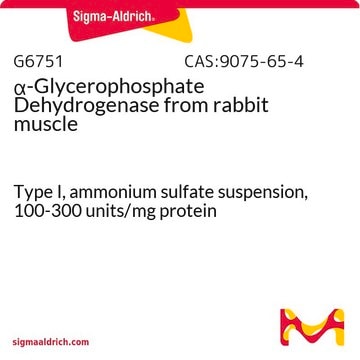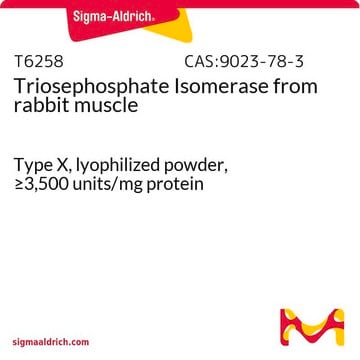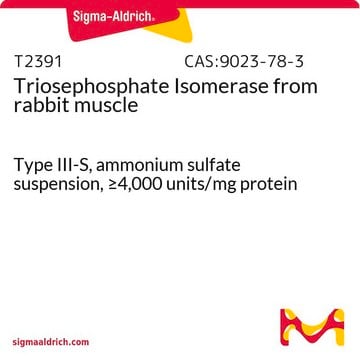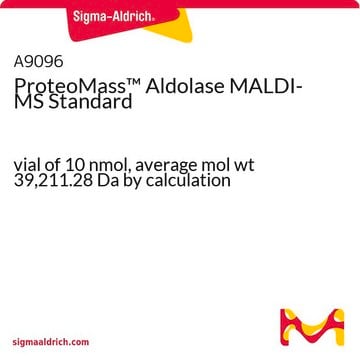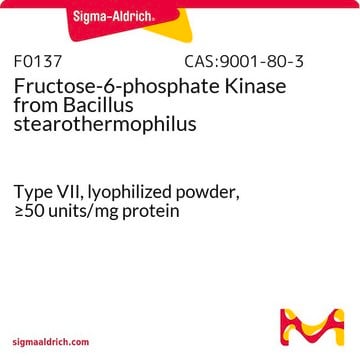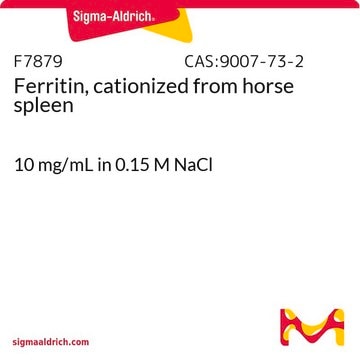A8811
Aldolase from rabbit muscle
ammonium sulfate suspension, 10-20 units/mg protein
Synonym(s):
D-Fructose-1,6-bisphosphate-D-glyceraldehyde-3-phosphate-lyase, Fructose-diphosphate Aldolase
About This Item
Recommended Products
biological source
rabbit muscle
form
ammonium sulfate suspension
specific activity
10-20 units/mg protein
foreign activity
glyceraldehyde-3-phosphate dehydrogenase ≤0.03%
lactic dehydrogenase ≤0.03%
phosphoglucose isomerase ≤0.6%
pyruvate kinase ≤0.1%
triosephosphate isomerase ≤0.05%
storage temp.
2-8°C
Looking for similar products? Visit Product Comparison Guide
General description
Application
- in standard 1-phosphofructokinase from rabbit muscle (RPFK-1) assay
- as a standard in the characterization of metabolic enzymes from glaucomatous tissues
- in fructose 2,6-bisphosphate assay of human cell lines
Biochem/physiol Actions
Unit Definition
Physical form
Analysis Note
Storage Class Code
12 - Non Combustible Liquids
WGK
WGK 1
Flash Point(F)
Not applicable
Flash Point(C)
Not applicable
Certificates of Analysis (COA)
Search for Certificates of Analysis (COA) by entering the products Lot/Batch Number. Lot and Batch Numbers can be found on a product’s label following the words ‘Lot’ or ‘Batch’.
Already Own This Product?
Find documentation for the products that you have recently purchased in the Document Library.
Customers Also Viewed
Articles
Instructions for working with enzymes supplied as ammonium sulfate suspensions
Our team of scientists has experience in all areas of research including Life Science, Material Science, Chemical Synthesis, Chromatography, Analytical and many others.
Contact Technical Service

